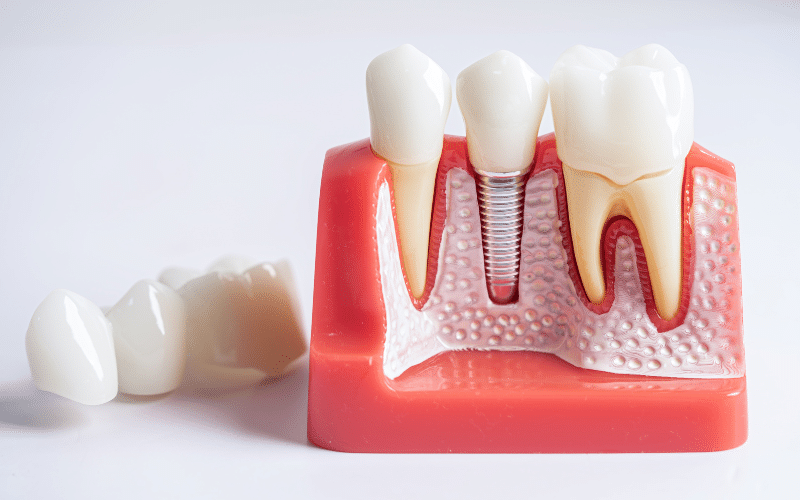ONLINE SCHEDULING AND VIRTUAL CONSULTS AVAILABLE

How to Prevent and Treat Bleeding Gums in Toddlers: A Parent’s Guide

When your toddler’s gums bleed, it’s more than just a fleeting concern—it can be alarming and confusing.
Parents often wonder, “Is this normal? What should I do?”
Understanding the causes and treatments for bleeding gums can help you address the issue calmly and effectively.
Bleeding gums in toddlers can stem from various sources, from teething to poor oral hygiene. Luckily, with the right knowledge and preventive measures, you can keep your child’s smile healthy and bright. In this blog, we’ll walk you through practical tips and expert advice on how to prevent and treat bleeding gums, ensuring your little one’s oral health remains on track.
Let’s dive in and discover how to keep those tiny teeth and gums in tip-top shape!
Understanding the Causes of Bleeding Gums in Toddlers
Bleeding gums in toddlers can be caused by various factors. Identifying the cause is the first step to effective treatment. Here are common causes:
- Teething: When toddlers are teething, their gums might become inflamed and bleed. This is usually temporary and should resolve once the tooth erupts.
- Poor Oral Hygiene: If your toddler’s teeth and gums aren’t cleaned regularly, plaque can build up, leading to gum inflammation and bleeding.
- Gingivitis: This is an early form of gum disease that can cause gum redness, swelling, and bleeding. It’s often due to inadequate brushing.
- Injury: A bump or fall can cause minor gum bleeding. This is typically a one-time issue that resolves on its own.
If you’re unsure about the cause of your child’s bleeding gums, a visit to a pediatric dentist Plantation, can provide clarity and guidance on the next steps.
Preventing Bleeding Gums in Toddlers
Preventing gum bleeding starts with establishing good oral hygiene habits early. Here are some tips to help:
- Regular Brushing: Brush your toddler’s teeth twice daily with a soft-bristled toothbrush. Use a fluoride toothpaste to help prevent cavities and gum disease.
- Healthy Diet: Encourage a balanced diet rich in fruits, vegetables, and whole grains. Limit sugary snacks and drinks that can contribute to plaque buildup.
- Routine Dental Checkups: Schedule regular dental visits to monitor your child’s oral health and catch any issues early.
- Proper Technique: Ensure you’re brushing gently but thoroughly. Avoid using too much force, as this can irritate the gums.
By maintaining these habits, you can significantly reduce the risk of gum problems in your toddler.
Treating Bleeding Gums in Toddlers
If your toddler’s gums are already bleeding, consider these treatment approaches:
- Gentle Brushing: Continue brushing your toddler’s teeth, but be extra gentle. Use a soft-bristled brush to avoid further irritation.
- Warm Salt Water Rinse: For mild gum inflammation, a warm salt water rinse can help soothe and reduce swelling. Use a small amount of salt in water, and ensure your child swishes and spits it out.
- Apply a Cold Compress: If the bleeding is due to injury, apply a cold compress to the area to reduce swelling and discomfort.
- Avoid Hard Foods: Stick to soft foods and avoid anything too crunchy or sticky that might aggravate the gums.
If the bleeding persists or worsens, consult with a dental professional for more specific treatment.
When to Consult a Pediatric Dentist?
While occasional gum bleeding can be normal, some situations warrant a visit to the dentist:
- Persistent Bleeding: If your toddler’s gums continue to bleed despite good oral care, it’s time to seek professional advice.
- Severe Symptoms: If you notice severe gum swelling, pain, or other concerning symptoms, don’t hesitate to consult a dentist.
- Infection Signs: If the gums appear infected or your child has a fever, it’s important to get medical attention.
Regular dental checkups are also crucial for early detection and prevention of gum issues. You can find a trusted pediatric dentist in Plantation to ensure your child’s oral health is in expert hands.
The Role of Diet in Gum Health
Diet plays a vital role in maintaining healthy gums. Consider these dietary tips to promote gum health:
- Vitamin C: Foods rich in vitamin C, such as oranges and strawberries, support gum health by boosting the immune system and helping the body heal.
- Calcium and Vitamin D: Dairy products and fortified foods help strengthen teeth and bones, including the gums.
- Hydration: Encourage your child to drink plenty of water throughout the day to help flush out food particles and reduce plaque buildup.
- Limit Sugars: Reduce the intake of sugary snacks and drinks that can contribute to plaque formation and gum problems.
By focusing on a balanced diet, you can enhance your child’s overall oral health and minimize the risk of bleeding gums.
Effective Oral Hygiene Practices for Toddlers
Good oral hygiene practices are essential for preventing and treating bleeding gums. Here’s how you can ensure your toddler’s dental care routine is effective:
- Use the Right Tools: Choose a toothbrush with soft bristles and a small head suitable for toddlers. This will make brushing more comfortable and effective.
- Demonstrate and Assist: Show your child how to brush properly and assist them until they can do it independently. Brush their teeth for them until they are about 7-8 years old.
- Fluoride Use: Ensure your toddler uses a fluoride toothpaste. Fluoride helps protect against cavities and gum disease.
- Make Brushing Fun: Turn brushing into a fun activity with songs or a reward system to encourage your child to brush regularly.
Preventing and treating bleeding gums in toddlers involves a combination of good oral hygiene practices, a balanced diet, and timely dental visits. By maintaining regular brushing, ensuring a nutritious diet, and addressing any symptoms promptly, you can help keep your child’s gums healthy. If bleeding persists or worsens, consult a dental professional for further evaluation. Taking these steps ensures your toddler’s smile stays bright and their gums remain in excellent condition.





